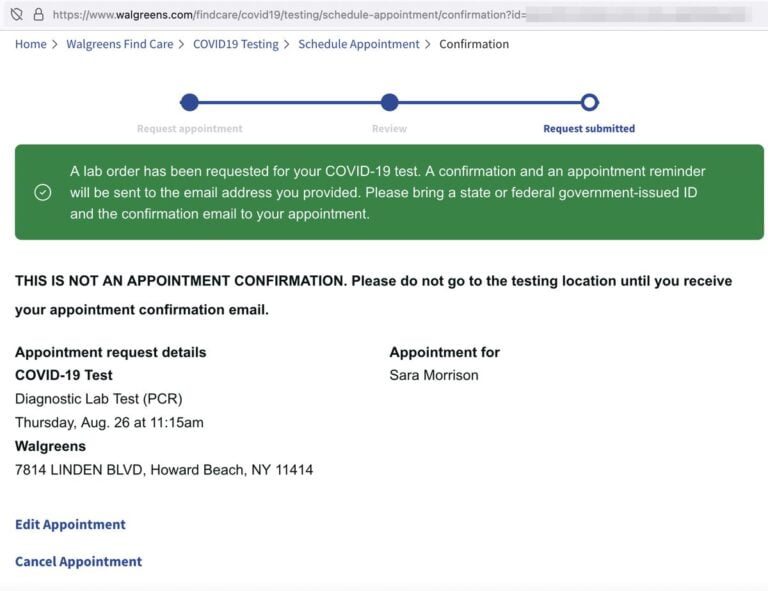What does it mean to achieve “cloud smart” status? Mark Shank, Principal, Cloud Engineering at KPMG, explains why it’s important, and the guiding principles for enterprises to get there.

Cloud-smart organizations understand that cloud is not optional: it’s an imperative to remain relevant to customers and competitive from a delivery standpoint.
getty
Businesses are navigating arguably the largest social and economic disruption in more than a generation: location closures, supply chain interruptions, uncertain public health constraints, increased demand for connected experiences, exploding data management needs, distributed workforces, and more.
Merely moving existing workflows and business strategies to digital channels is not enough to drive transformative outcomes—not when disruptions have forced many enterprises to pack years’ worth of digital transformation into just a few months.
Enterprises need to drive growth by offering new customer experiences, such as voice interfaces or integrations with other rising digital platforms, and by unlocking new business models, such as data monetization. They need to generate insights that reveal not only what’s working and what’s not but also how to proceed. And they need to develop the ability to make new partnerships or change directions more quickly than ever, moving with the agility and urgency we saw from the healthcare industry as it reorganized itself to deal with COVID-19.
All of this is complicated by the fact IT resources are strained, with bug fixes and administrative tasks too often prioritized over strategic projects that can help the business.
The cloud should not be viewed as something additive that simply augments what a business already does. Rather, it should be viewed as a foundation for how business gets done.
Cloud technologies can help enterprises surmount these challenges and have been important to providing the resilience organizations have needed to weather the storm of disruptions. But to both serve current business needs and create the ongoing agility and resilience to conquer future challenges, enterprises need a strategic, rather than reactive, approach to cloud adoption.
In our work at KPMG, including our partnership with Google Cloud, we’ve observed that leaders need to see cloud as the platform for the convergence of technologies that are required to support the new workplace. Enterprises face a complex set of leadership and technical decisions—and an imperative to build and guide fundamentally new business models that fuel a new work culture of collaboration. Adopting cloud technologies is not the goal so much as to achieve what we call cloud smart status: scaled deployment that seamlessly integrates infrastructure and talent around business objectives.
Here, across a range of the challenges that are most pressing to enterprises today, are some of the guiding principles to help enterprises become cloud smart.
Lead from the C-suite to unite technical and business teams
Table of Contents
Harnessing the cloud for transformation—not just incremental efficiency improvements—requires a clear vision for how the company needs to better serve customers. This vision should encompass how the organization can operate more efficiently, how teams can be reimagined with fewer divisions between business and IT, how existing employee skills will need to be up-leveled, how new talent can be pursued, how metrics and incentives can be established to encourage adoption of new cloud-based services and workflows, and much more. Organization-wide change cannot organically grow out of some smaller part of the enterprise. Change of this scale needs to be driven from the top—this is a C-suite challenge, not just an IT challenge.
The C-suite must articulate a clear vision for delivering new experiences to customers and driving internal efficiencies and cost-containment goals. This should include defining metrics and incentives to drive change throughout the organization.
Technical leaders and business leaders should work together to define goals and identify how those goals can be accelerated by the cloud. Ultimately, the distinction between many technological skills and many business skills should disappear. For example, deciding whether to refactor an application for the cloud, so that its data and functionality can be integrated into agile development processes, requires understanding how the application contributes to business outcomes and whether modifying the application will drive better outcomes in the future. The business need and the technology need are inseparable.
Related: Learn how to begin your digital transformation journey with confidence. Get the “CIO’s Guide to Application Migration.”
Define cloud as the foundation for the business
Cloud should not be viewed as something additive that simply augments what a business already does. Rather, it should be viewed as a foundation for how business gets done. Fully deployed, the cloud should not simply layer atop current operations—it should transform virtually all aspects of an organization. Examples include:
- Automation, from infrastructure scaling to security, should transform IT from a curator of systems to an enabler of business strategies—consider, for example, how Starbucks has opened new opportunities via its mobile app and digital loyalty program or how T-mobile has been able to diversify its strategic partnerships, produce new digital experiences, and offer new services while still moving swiftly and efficiently.
- An enterprise’s ability to invest and divest in new digital ecosystem relationships means having the ability to leverage flexible computing power and the ability to quickly spin-up or turn-down infrastructure to keep costs in-line with demand. Most enterprises simply cannot do that outside of the cloud.
- Cloud-first development techniques let developers work in smaller, more independent, more agile groups while letting the enterprise centralize and streamline governance. This helps developers build new applications more quickly, make better use of existing assets, and integrate external services and assets, such as cloud-hosted machine learning solutions.
- Collaboration should not depend on employees’ physical proximity. Similarly, digital resources should be accessible anywhere a worker can get online. Cloud collaboration and productivity tools address all of the above.
Use automation to drive and scale process change
While transforming the enterprise takes the whole C-suite, the CTO, CIO, and CDO are the champions of change. By scaling process change, putting the right digital tools in the right hands, and driving efficiencies, these leaders align IT more closely than ever with line-of-business needs.
For example, by driving automation of cloud infrastructure, these leaders can both build resiliency within systems and make better use of technical talent by transitioning them from on-premise infrastructure curation to more strategic initiatives. Likewise, these executives’ purview should include automation of security and access checks, which can help the enterprise to offer both internal and external parties self-service access to tools, information, and services. This can accelerate development, collaboration, partnerships, and customer engagement all while improving administrators’ visibility into usage of corporate assets and ability to respond to problems or threats.
Get agile
Every organization already has valuable data, functionality, and other digital assets. Improving a business often isn’t a matter of inventing something completely new so much as recomposing existing assets in new ways or connecting an old system to a new one. The more easily an enterprise can recompose what it already has, or connect its most compelling internal capabilities to great complementary capabilities from external partners, the more flexibly and responsively it can react to disruptions.
This is what research firm Gartner calls the “composable enterprise”—an organization that “must be able to deliver innovation quickly and adapt applications dynamically—reassembling capabilities from inside and outside the enterprise.” Born of cloud-native development techniques that leverage assets such as APIs and microservices, composability is a vital part of turning the cloud’s data prowess and scale into actions that can be implemented to advance strategies, including sharing IT resources with partners for mutual advantage or connecting to ecosystem platforms.
Much of this flexibility involves tools for traditional application developers, but the emergence of cloud-based low-code and no-code platforms can extend this “composability” in new directions. These platforms allow developers with varied levels of experience to quickly develop scalable business applications by leveraging pre-built functions. In the hands of experienced coders, they can dramatically speed the development of even sophisticated applications that can automate workflows and integrate with existing enterprise software systems. And in the case of true no-code platforms, such as Google Cloud’s AppSheet, non-technical “citizen developers” can build powerful line-of-business apps and process automations, using natural language interfaces and other intuitive tools rather than having to write even a single line of code.
Do more with data
Cloud-based governance and security tools can generate analytics about how and by whom corporate data is accessed. This can help enterprises understand changing behaviors among customers, users within the organization, and bad actors.
Data warehouse services hosted in the cloud can provide massively resilient and scalable infrastructure that can power almost any query or support almost any number of users. New data-driven use cases, such as virtual supply chains, let enterprises use the cloud to better plan for contingencies and understand relationships with partners and suppliers.
These cutting-edge capabilities reinforce the extent to which technology and business skills must be blended. To bring data sources together to drive actionable insight, it is important to understand the areas that need to be optimized. This requires industry and domain expertise—again, the differentiator is the intermingling of business skills and technology skills that cloud technologies enable, not just the technologies themselves.
Related: Determine the best data warehouse for your needs. Get “The future of data warehousing” ebook.
Getting cloud smart
Cloud-smart organizations understand that cloud is not optional: it’s an imperative to remain relevant to customers and competitive from a delivery standpoint.
While competitive dynamics within industries and macroeconomic challenges will continue to evolve in new and unforeseeable ways, a modern approach to leveraging the cloud for strategic advantage, and not just infrastructure savings, can help businesses to maintain control amidst the chaos. Enterprises that are cloud smart can position themselves to lead the pack in the transformation race—and to be at the forefront of innovation.
Take the next steps: Doing more with your data is one step in becoming more cloud smart. Get the report from Google Cloud and Harvard Business Review Analytic Services, “Turning data into unmatched business value,” to learn where business leaders are prioritizing technology investments in order to extract more value from their data.
Hear more from Mark Shank: Below, Mark shares three things that companies need to do to realize the transformative effect of the cloud.







